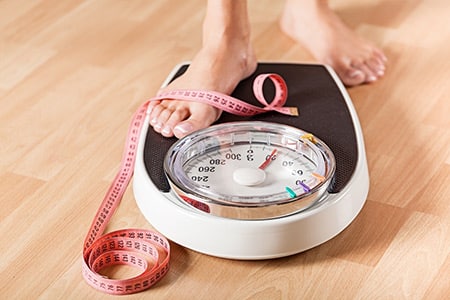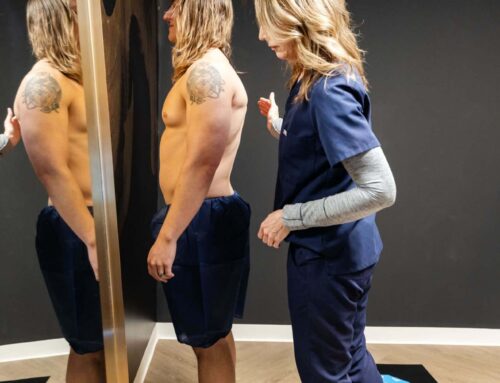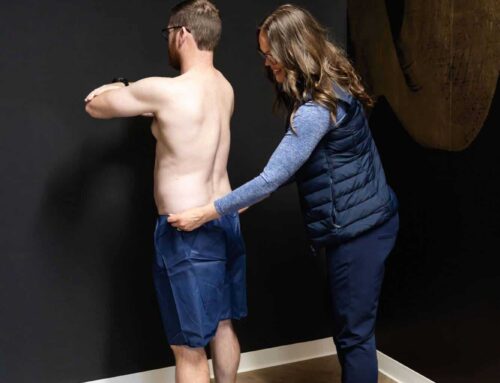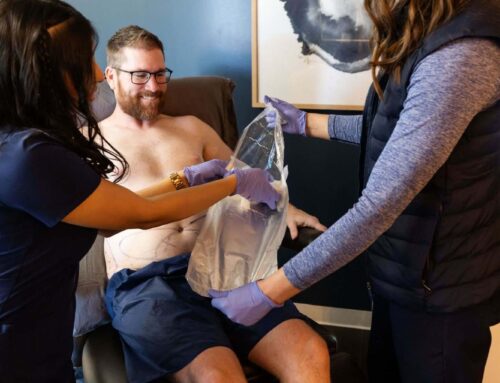 When it comes to having weight-loss goals, we are usually tied to the number on the scale. We want to lose 10 pounds, 30 pounds, or more.
When it comes to having weight-loss goals, we are usually tied to the number on the scale. We want to lose 10 pounds, 30 pounds, or more.
But what are you losing when you lose weight?
The number on the scale reflects total loss, which is equal to fat loss plus water loss plus muscle loss. All of those numbers together constitute your weight. And when you focus on losing weight, the reality is that you’re probably losing more than just fat.
You’re probably thinking: There has to be a better way to measure my progress!
And there is.
Weight Loss vs. Fat Loss
When you want to lose weight, you monitor your diet and fitness levels. After all, weight loss is a simple formula: take in fewer calories than you burn off. But what you might not be taking into account is that our bodies tend to lose a lot of water when we exercise (even if you’re drinking more water to compensate). Also, many diets focus on reducing carbohydrates, which naturally bind to water and result in weight gain. So if you are cutting back on carbs, you’ll notice the number on the scale go down.
That’s the essence of weight loss.
Fat loss occurs when you maintain more muscle, which boosts your metabolism and increases fat loss. Yay! That’s what we’re looking for!
Unfortunately, too many people are so worried about the number on the scale that they end up being “skinny fat,” which isn’t exactly what anyone is going for.
Keep the Muscle, Lose the Fat
A standard way to lose weight includes cutting back on carbs and fat in your diet while including an increased amount of cardiovascular exercise. And yes, that does work—to lose weight. But that doesn’t help you lose fat.
To lose fat, you need to increase your muscle mass and focus less on what the scale says. To do that, you need to incorporate more than cardio in your fitness regimen, such as weight training, as well as adequate sleep and a well-rounded diet focused on comprehensive nutrition. This results in higher metabolism and fat loss with increased energy and body strength. And those are great results that will help you reach your goals.
A Better Way to Measure Results
So if the scale isn’t the best way to see how well you’re progressing, what is? You need to look at your fat percentage in relation to the rest of your body’s makeup. There are numerous ways to do that at home, including using a caliper or a special scale that calculates fat percentage.
While these methods of measurement will put you in the ballpark, if you want a true idea of what comprises your body, you’ll need to see a professional for a displacement test, either in water or air. It’s more expensive, but it will give you a handle on where you are so you know where you need to be to reach your goals—outside of the number on the scale.
How CoolSculpting Helps You Reach Fat-loss Goals
The best thing about CoolSculpting is that it goes right to the source of our body woes by targeting excess fat cells. Our patented applicator freezes the fat in specific areas of the body, such as hips and abdomen. Those frozen fat cells then die and are naturally flushed from the body over the course of the next few weeks. The result is a tighter look and a lower body-fat percentage.
If you’re ready to ignore the scale and really lose some fat, CoolSculpting may be the solution you’ve been seeking. Start by looking at our before-and-after photos to see what a difference this FDA-cleared process can make for you. We look forward to meeting you soon.






